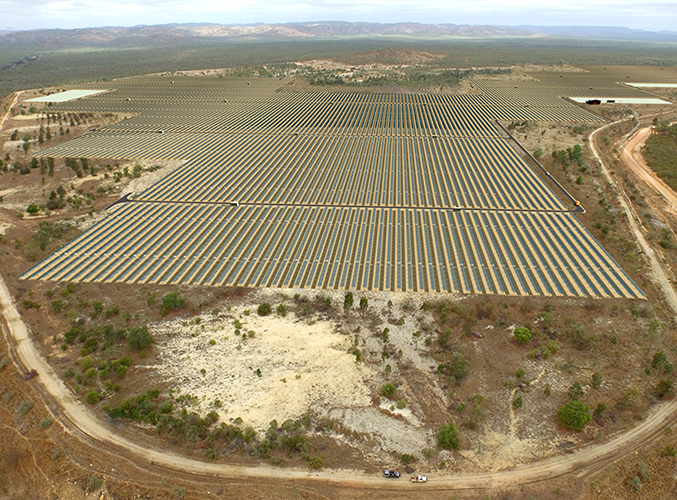A new report by Australia’s Climate Council talks of a “huge” year ahead for the country’s large-scale solar sector, with more than 20 utility-scale solar plants totalling more than 1 GW set to come online in 2017, with a further 3.7 GW of new capacity in the pipeline.
The report, titled State of Solar 2016: Globally and in Australia, was a little conservative in its global cost projections, citing an average solar park price of $110/MWh and price falls of 40-70% by 2040, but generally painted a positive PV picture that tallied with many other leading reports issued in the past six months.
From an Australian perspective, beyond that 3.7 GW pipeline figure another noteworthy number was 20 GW: this is the amount of solar capacity the Climate Council believes will be added in Australia over the next 20 years.
Solar power is now cheaper than retail power prices found in all of Australia’s capital cities, aside from the Australian Capital Territory. Currently, solar in Australia supports 8,000 jobs, with the potential to create 20,000 more by 2030, the report added, and the country now has the equivalent of more than one solar panel per person installed.
Popular content
Combined, Australia boasts 5.44 GW of installed PV capacity across 1.58 million installations – a figure shaped by rooftop PV penetration that reaches as high as 30% in the states of South Australia and Queensland. For Western Australia, that figure is 24%, with New South Wales and Victoria each at around 15%. On average, the typical Australian solar home has a 5.34 kW system installed.
At utility scale the wheels are beginning to turn. In 2016 the Australian Renewable Energy Agency (ARENA) announced AUS$1 billion in funding for 482 MW of PV projects, and a number of multi-megawatt solar farms are due to boost the sector by at least 1 GW this year.
In terms of storage, the Climate Council finds that 6,500 households currently have some sort of distributed storage system installed – a figure that they expect will be tripled in 2017. Looking farther ahead, a combination of falling battery costs, high power prices and changing retail tariffs will be the catalyst for rapid uptake of home battery systems, with the report suggesting that 1.1 million Australian households could have a solar+storage system connected by 2035.
This content is protected by copyright and may not be reused. If you want to cooperate with us and would like to reuse some of our content, please contact: editors@pv-magazine.com.


6 comments
By submitting this form you agree to pv magazine using your data for the purposes of publishing your comment.
Your personal data will only be disclosed or otherwise transmitted to third parties for the purposes of spam filtering or if this is necessary for technical maintenance of the website. Any other transfer to third parties will not take place unless this is justified on the basis of applicable data protection regulations or if pv magazine is legally obliged to do so.
You may revoke this consent at any time with effect for the future, in which case your personal data will be deleted immediately. Otherwise, your data will be deleted if pv magazine has processed your request or the purpose of data storage is fulfilled.
Further information on data privacy can be found in our Data Protection Policy.